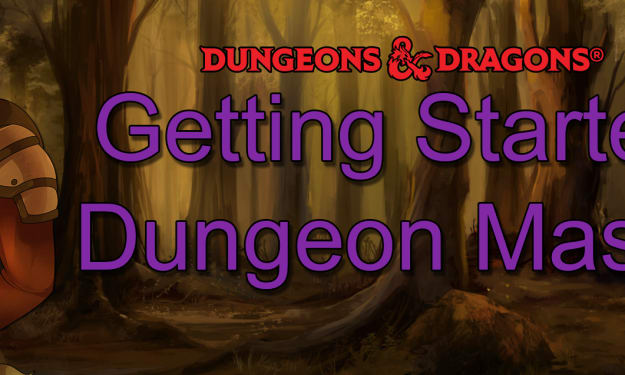
Immersive Planning
It is important that when you plan your campaign, you ensure it is immersive. Your players should drawn into it and make them want to become the characters they are playing and interact with your world. Think of it in a ‘game logic’ type of way. A game is more immersive when you can interact with things, if it is open world and if the characters in it have more depth.
Build Your World
Having a world that is alive takes a lot of work. More work than most wish to put in, which isn’t always a bad thing, and this is why we have pre-built worlds from fantasy books/films or pre-made adventure books. However nothing beats the joy of having your players interact with your world, change it and begin to understand the major places, NPCs or even the plants and wildlife of certain regions. Heck, some of my players can recite certain points of lore and history of my world from their involvement.
To me, nothing beats having your own world, so now you have to ask yourself, are you willing to dedicate months of your time to build one? It is no easy task! I can however give you tips to make that journey easier. Just go ahead and read my post about it!
Key World Information
A great thing to plan in your world are the key scenarios that a player might run into. While your party is off adventuring, other things are taking place, just like in real life.
Perhaps there are states or kingdoms at war with one another. Perhaps there is an uprising in a castle. Maybe a a general is looking to usurp their king. Think about trade, which kingdoms are trading with one another or a company has established a foothold in a new territory and/or looking to expand. Does this new trade line or company affect the prices of local merchants just as if a large company were to open up on your high street?
Is there an evil cult forming or perhaps a group of mages looking to create a council of good to protect the people of the world?
There should always be other things going on in your world which you can choose to introduce as part of a main plot, a side quest or simply something to draw the attention of the party should they find themselves lost for what’s next.
In my world there is always something going on. During the campaign, my players were shocked to discover that a city they had once visited and invested in had now been taken over by another kingdom. Many times they wish to return to tie up a loose end, find out about someone or get aid as they had in turn aided the city, only to be reminded that they cannot return there or they may very well be killed by the hostile kingdom. This helps to breathe life and show the players that it is not only a living world, but there can be many consequences for their actions or lack thereof. I had many NPCs speaking about the upcoming war around the player characters and each time they didn’t care. Now that it affects them, they wish they had done something to help prevent this. The party is now much more observant of general NPCs around the various towns and cities as I like to use the gossip and rumors of the local populace to introduce vital information.
Make It Interactive
Your world and every location your characters visit should be interactive. They have the power to change lives, affect politics and even shape the land itself. In my campaign, the player actions have change the outcome of a war between two rival nations, helping one side to gain advantage. It's possible they may help a town change the route of a river which changed an entire ecosystem or eradicate an entire species of creature and given power to an evil cult.
Your players can literally change the world, and how they do it doesn’t take much at all. Consider this quote:
“People fear travelling back in time as one small action can affect the present in huge ways. However people of the present fear making one small action because they don’t believe it can affect the future in a big way.”
Allow even the smallest action (or lack of acting upon something) to make huge consequences in the world and show your players just how much their choices, however small, can make great impacts.
Immersive NPCs
NPCs are a vital part of making a believable world and campaign. Planning their personality, role and importance within an interaction all help to deliver a more immersive experience. You never know how your party might react to any given situation, so it might also be worth doing some stats for your NPC too. This can also help to prepare for the party trying to drag the NPC to a dangerous situation where skills/combat might be able to aid the players.
I generally use a ‘monster sheet’ layout for each story NPC to ensure there is plenty of content available should it be needed. 9/10 times, a lot of the details go unused, however, that one time you didn’t prepare, the players will likely wish to know more. Yes, it takes a bit more effort on your part, but it’s worth it in the long run as it means you’re well prepared for anything your players might throw at you, and unused NPCs or details can always be recycled for later parts of the campaign or future NPCs/Campaigns.
Story Lines
Creating a story isn’t fun if there is a clear A to B. Instead, there is a lot that should go between to build up suspense, mystery and character building. There are, in my opinion, three elements to creating a great D&D story line
Overarching Story
If you are running a campaign, you likely already have some kind of idea of where you want the story to go. Having an endpoint and working back can sometimes be a great way to build your story as you can plan interactions based on how the outcome is likely to go. While your players may not want to always follow the story as you planned them to, you can calculate the difference in the end result based on their actions throughout the campaign and make them aware that because they didn’t do something, then a bad thing has developed. This can act as an entry point back into the story as a consequence of their actions has been made known and they may feel drawn into it
Player Story Arcs
I like to split my campaign up into player arcs. This means each section of the campaign starts and ends around the backstory or goal of a specific character. I let my players know who it is based around and they work together to achieve it, knowing that player will help them in return. This breaks up the main campaign and allows for much more content to be added. This also is a great way to tie that character up in the overarching story, as I can make their goals align with goals of the main story.
This encourages character development and gives greater interaction between the players.
Filler Arcs
Filler sessions are a great way to break up story heavy sessions. Or sometimes, there just isn’t enough planning done as your party has lead the story in a totally unpredicted direction. I tend to have a few filler sessions in place that can just fit in nicely with what the party is doing.
For example, one session my characters were offered to take one of several legendary, rare, uncommon and common magic items. Before seeing these items however, the party used a wish that I had given them to have all the items within the magic vault to appear before them. The wish was very well considered and they pulled it off. As they didn’t know what the items were, I included a haunted dollhouse into them, which created an entire session of content, having the party be haunted and sucked into the dollhouse.
Another was a simple cave that the party can stumble upon. I placed a comedic NPC outside and some silly/crazy statues within. All the puzzles inside were just time wasting puzzles which had some humorous dialogue to entertain the players, and upon leaving, they ended up with magic items that help to make things a little more entertaining (such as a hat that makes the wearer believe they are invisible when really they are not). This makes for some great encounters throughout the campaign.
Filler arcs are great to just unwind, distract the party while you plan or to run if multiple key players aren’t able to attend the session. Use fillers sparingly however, or you may find yourself running a ‘Naruto Campaign,’ and nobody wants that.
About the Creator
Earl Grey
Twitter @EarlGreyNT
Contact: [email protected]






Comments
There are no comments for this story
Be the first to respond and start the conversation.